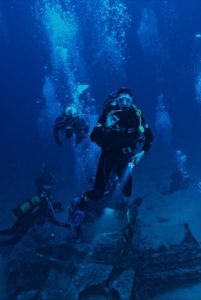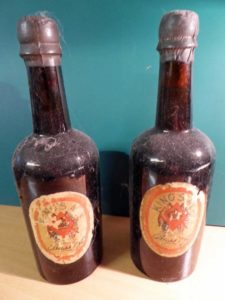 Three bottle of beer that were retrieved by divers of Global Underwater Explorers from the shipwrecked vessel Wallachia, which sank in the Clyde estuary in 1895, have been found to contain live brewing yeast.
Three bottle of beer that were retrieved by divers of Global Underwater Explorers from the shipwrecked vessel Wallachia, which sank in the Clyde estuary in 1895, have been found to contain live brewing yeast.
And this amazing find is providing a boatload (sorry) of information about the microbiology of Victorian and Edwardian stock ales.
The Wallachia carried beer from the McEwan’s brewery in Glasgow and a 10% ABV barleywine from the Bass brewery in Burton upon Trent that was brewed for a visit by King Edward VII in 1902.
Both beers are prime examples of the stock ales reputed as the best of British brewing due to their complex yeast character, high alcohol levels and long maturation.according to research from Brew lab and the University of Sunderland in the UK.
The research confirmed that traditional beers from that period were fermented with a mix of yeast species as well as lactic acid bacteria which “would contribute to the complexity of the beer.”

credit: Brewlab, University of Sunderland, Global Underwater Explorers
The study, which was published in the Journal of the Institute of Brewing, provided details on the beer’s alcohol strength, bitterness, pH, color and residual sugars.
Enough details to actually recreate the 120-year-old beer!
Brewlab Director, Dr Keith Thomas, said “This is a long running project in collaboration with Global Underwater Explorers who visited the Wallachia wreck three times to retrieve bottles.
“Our analyses provide a unique insight into the microbiology of Victorian and Edwardian brewing. We were very fortunate to isolate living yeast which we are studying in more detail.”
“The use of advanced molecular biology is increasingly helping us to investigate artefacts. Dr Lewis Bingle, from the University of Sunderland, added…
“This is a good example of where the past can provide insight to future brewing and we look forward to tasting the recreation compared to today’s beers.”
###
Beer image credit: Brewlab, University of Sunderland, Global Underwater Explorers
 American Craft Beer The Best Craft Beer, Breweries, Bars, Brewpubs, Beer Stores, And Restaurants Serving Serious Beer.
American Craft Beer The Best Craft Beer, Breweries, Bars, Brewpubs, Beer Stores, And Restaurants Serving Serious Beer.
